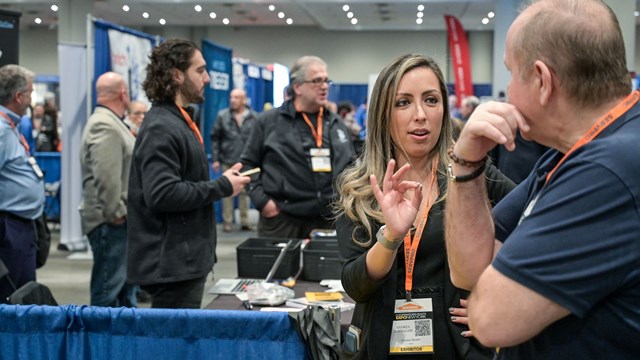Bill and Martha Jensen bought a new condominium in Miami in 1995 and lived there for 19 years. In 2014 they sold the apartment to Max and Rita Diaz. A year later, the condominium association’s board of directors voted to replace the building’s roof and imposed a special assessment to pay for the project. “That’s not fair,” the Diaz’s complained, insisting that they shouldn’t have to pay the full assessment to replace a roof that sheltered the Jensens for 95 percent of its life.
It wasn’t fair—but major components and systems don’t last forever, and big assessments are what happens when a board doesn’t set aside funds on a regular basis to update those components and systems.
“The number one mistake a board can make is characterizing such things as future expenses,” says Robert Nordlund, founder and CEO of Association Reserves, Inc., a Calabasas, California-based, reserve study firm with clients in every state.
“It’s human nature to worry about future things at a future time,” he explains, “but if you characterize reserve expenses as offsetting ongoing deterioration, the future takes care of itself. Associations that don’t pay this ongoing bill doom themselves to deferred maintenance, special assessments, and declining property values.”
What Deserves Reserves
Nordlund says that for an item to warrant reserve funding, it must be a common area maintenance responsibility, exceed a minimum threshold cost, and have a limited and predictable useful life.
In addition to roofs, long-lived common assets meeting that criteria include masonry walls (which may need concrete restoration or repointing to renew the mortar between bricks); chillers, cooling towers, and other parts of a building’s climate-control system; elevators; the fire-alarm system; interior décor in common areas such as administrative offices, hallways, lobbies, and recreation rooms; sidewalks, streets, parking lots, and garages; balconies and decks; and swimming pool surfaces, pump motors, and filtration systems.
In cooperatives, the building’s underlying mortgage should be a reserve item, too, says Annette Murray, a certified public accountant and a shareholder with Wilkin & Guttenplan, PC, an accounting firm with offices in New York City and East Brunswick, New Jersey.
“The board needs to monitor and plan for a mortgage, especially when it’s coming up to be refinanced a couple of years ahead,” she says. “Many co-ops pay interest only and just keep refinancing the same dollar amount. If they need more money, they increase their mortgage. A best practice would be to have a mortgage that amortizes, paying interest and principal.”
More Than Just Smart...
In most jurisdictions, common-interest associations conduct a periodic reserve study—a budgeting tool that assigns an approximate useful life to each major building component, estimates its replacement cost, and sets aside funds each year so replacement funds will be adequate when replacement time comes.
Associations update their reserve study annually or every few years to account for inflation and product enhancements. “Reserve studies should prepare the association for material and technical upgrades such as new pool surfaces and more efficient elevators and boilers. You buy the new appropriate thing, not a like-for-like replacement,” Nordlund says.
Many states—including Florida - require reserves, and some even specify the minimum acceptable percentage of the budget that an association must set aside in reserve. Robert L. Kaye, managing member of the law firm Kaye Bender Rembaum, which has offices in Pompano Beach and Palm Beach Gardens, “Section 718.112(2)(f) of Florida Statutes provides that the annual budget of an association must include full reserves. Whether or not to present the option to the membership to waive all or a portion of the full reserves is first up to the board of directors.”
“If the board does not wish to reduce the reserves,” Kaye continues, “there is no requirement in the law that it be offered for membership vote. Each year, the proposed budget must include the formula for computing the full reserves set forth in Section 61B-22.005 of the Florida Administrative Code, which requires an indication of the estimated replacement cost of each of the items that must be included in reserves. This suggests the need to undertake a reserve study on a periodic basis.”
In other markets—New York City being one major example—no such requirement exists, and consequently many associations do nothing. “Others perform a capital-needs assessment, which states what will need replacement within the next five or six years and how much that will cost, but doesn’t set up a funding plan,” says Mitchell H. Frumkin, president of Kipcon Inc., an engineering consulting firm whose headquarters are in North Brunswick, New Jersey. He served in 2002 as president of the Community Associations Institute (CAI), a national membership organization for common-interest residential communities. “It just assumes that the board has money, which may come from savings, a special assessment, or a loan.”
Whether or not their state requires it, many boards are beginning to embrace reserve studies to make people buying into their buildings eligible for Federal Housing Administration (FHA) financing. To qualify a building, “Its board must set aside 10 percent of the budget as a reserve, or present a reserve study less than two years old that states what should be set aside,” Frumkin says.
A typical Reserve Study set-aside, enough to offset ongoing deterioration, commonly is 15-40% of an association's total budget, Nordlund says.Thus, buildings that rely on the FHA reserve percentage requirement will usually collect insufficient reserves from the owners, causing a future reserve cash flow crisis.
The Right Team
A reserve study that yields useful information should be a team effort, beginning with the board and its property manager or management firm. “The manager is the primary communicator between the board and its vendors,” says Matthew Grobert, vice president, capital reserves/development transitions for the Falcon Group,.
“Every association should have a good attorney well-versed in common-community law,” he continues, and because the laws specific to condos, co-ops, and homeowners’ associations vary to some extent, the attorney should have an especially strong background in the type of community the board oversees.
In selecting a professional to perform the reserve study, a board should employ an engineer who is a reserve specialist (RS) and/or a professional reserve analyst (PRA). A board’s own in-house engineer may help with specific property knowledge, but probably won’t have the expertise of a consultant with reserve credentials.
CAI administers the RS designation. The PRA credential comes from the Association of Professional Reserve Analysts, the reserve-study industry’s own trade organization. Grobert is a reserve specialist; Frumkin and Nordlund hold both credentials as well.
However, “Some firms doing reserve studies don’t even have a professional engineer on their staff,” Grobert cautions. “They use some other way to gather costs. Using a firm with architects and engineers doing replacements and restorations helps me to perform a very accurate reserve study, because I have up-to-date costs.”
Tolerance Level
Once the reserve study is complete, the board and owners must decide on a funding plan based on their tolerance for risk and their willingness to set money aside each month for the reserves.
Some associations strive for full funding, collecting enough money to replace each component at the end of its useful life, without charging residents any additional assessments. In the interim, the stored funds yield interest and serve as an inflation hedge. This sounds good, but many owners disapprove of a fully-funding approach because it increases their monthly assessments.
At the opposite extreme is baseline funding, which reduces annual contributions, eventually dropping the reserves to zero. This strategy lowers the monthly assessments, “But if a component has to be replaced early, or costs more than expected, you can run into trouble,” Frumkin warns.
Threshold funding strikes a middle ground between full and baseline funding. “Most associations do threshold,” Frumkin says. “They’re maybe 60 percent to 70 percent funded,” and if a big repair or replacement is needed, the budgetary shortfall will be made up with a one-time assessment of all residents.
Let ‘Em Know
Regardless of which reserve funding model a board adheres to, when must the board provide the reserve schedules to the members?
“It depends,” says Joseph E. Adams, an office managing shareholder attorney with the law firm of Becker & Poliakoff in Fortt Meyers and Naples. “Chapter 720 of the Florida Statutes, often called the Florida Homeowners’ Association Act, provides that an association is ‘deemed to have provided for reserve accounts’ if reserve accounts have been initially established by the developer, or if the membership of the association affirmatively elects to provide for reserves by a majority vote of the owners. Such reserves are often referred to as ‘statutory reserves,’ although this term is not actually used in the statute.
“If the association maintains statutory reserves,” Adams continues, “Section 720.303(6)(e) of the Act requires that reserves shall be computed by a formula based upon the estimated remaining useful life and established replacement cost or deferred maintenance expense of each reserve item. This calculation is usually contained in a document called the ‘reserve schedule,’ which would need to be part of the proposed budget.
“However, unlike the law for condominiums, there is no requirement that an HOA send out the proposed budget in advance of the meeting where it will be adopted,” Adams says. “Rather, Section 720.303(6)(a) of the Act simply states that the association ‘shall provide each member with a copy of the annual budget or a written notice that the budget is available upon request at no charge to the member.’ This is generally interpreted to mean the adopted budget, as opposed to the proposed budget, must be sent or made available to the homeowners.
Where the Money Goes
A building or association’s accountant and banker or financial advisor should be part of the reserve-study team to help the board decide where to invest the reserves until they are needed. The accountant’s main role is to sort out these capital contributions (which are not taxable and can be carried forward from year to year) from taxable interest on investments.
Whatever investments are selected must be extremely safe, enabling the board to fulfill its fiduciary responsibility, says Abdullah Fersen, chief executive officer of Newgent Property Management in Yonkers, New York. His company manages 38 buildings, ranging in size from 16 to 120 units and in age from 30 to 70 years. Fersen says acceptable investments include certificates of deposit (CDs), money-market funds, and U.S. Treasury securities—bills, notes, and bonds—with varying degrees of maturity.
“When you set up your investments, make sure they’re laddered,” Frumkin advises. “Don’t put it all into long-term investments. Look at the reserve study and plan, so your investments come due when they’re needed, and so you don’t run into penalties when you have to spend money to replace something.”
And that, in a nutshell, is the takeaway from any discussion of reserves and long-term planning for any size community: planning now for tomorrow, next year, and even the next decade is the duty of a proactive, conscientious board-management team, and to the good of the community at large.
To learn more about reserve studies, see Reserve Funds: How & Why Community Associations Invest Assets, published by CAI Press, Falls Church, VA.
George Leposky is a freelance writer and editor living in Miami, Florida, and is a frequent contributor to The South Florida Cooperator.
Correction (11/8/16): This article has been revised to clarify a point made by Robert Nordlund about how much an association's budget is set aside for a reserve study.










Comments
Leave a Comment